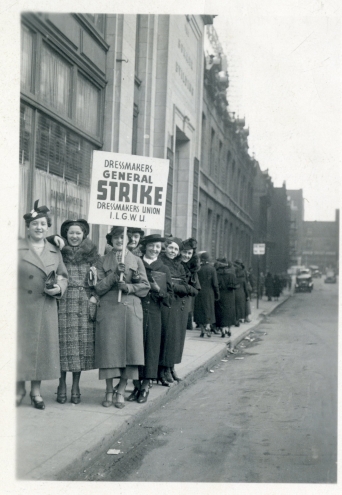Toronto's Garment Unions: Threads of Unity and Discord
On view: Lipa Green Building on Sherman Campus
4600 Bathurst Street, Toronto, Ontario
“The continuing battles for the right to organize; for union recognition; for higher wages and shorter hours, led to a gradual polarization of the community. Often it was brother against brother, landsman against landsman and neighbor against neighbor.”
--J.B. Salsberg, union leader in the 1920s and 1930s, Canadian Jewish News, Dec. 1971.
This display showcases material from the Ontario Jewish Archives related to unions and the garment industry in the first half of the 20th century. The items represent an era when Jewish immigrants dominated Toronto’s garment trades as workers, union leaders and manufacturers. It was a time when low wages, long hours, and hazardous working conditions were the norm; when striking was a common part of the working class experience; when the Russian Revolution and other political developments influenced the ideologies of a new generation; and when Spadina was the focal point of Jewish working class life. The first case focuses on working conditions in the shops, employer-employee relationships and working class culture. The second case highlights the stories of union infighting, union activism, and gender relations.
